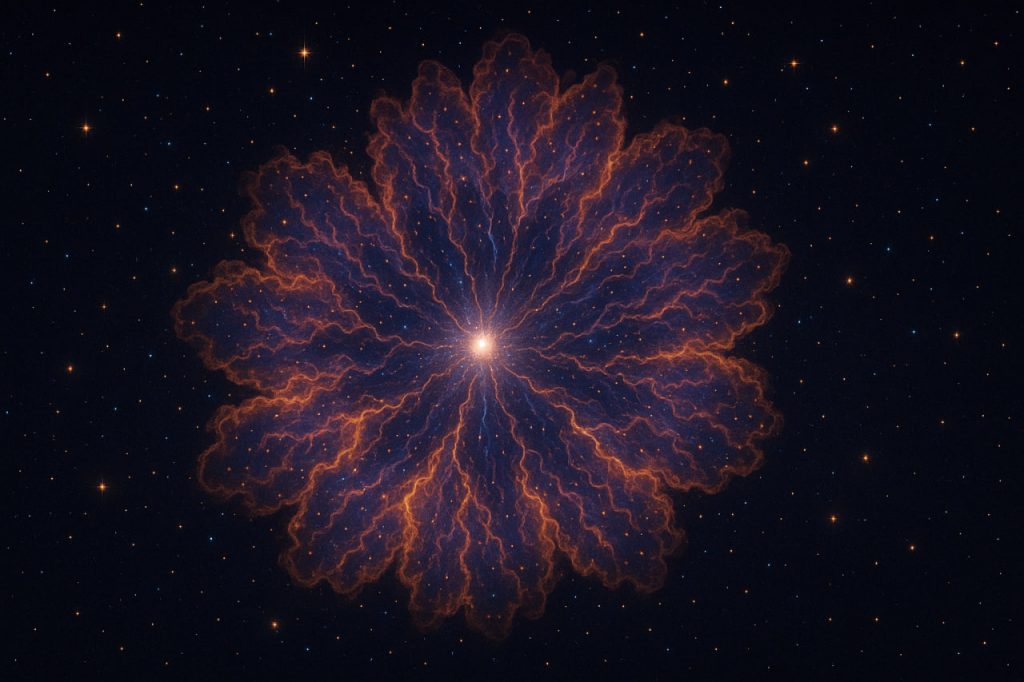The Crab Nebula (cataloged as Messier 1 or M1) is one of the most studied and iconic objects in the night sky. Located about 6,500 light-years away in the constellation Taurus, it is the visible remnant of a supernova explosion that was recorded by Chinese and Arab astronomers in the year 1054 AD. The explosion was so bright it was visible even during the day for several weeks.
What remains today is a swirling, glowing cloud of gas, plasma, and energetic particles — a nebula — expanding outward from the original star’s destruction.
Structure and Composition
The Crab Nebula is an extraordinary and complex object:
- It spans about 11 light-years across and continues to expand.
- At its heart lies a pulsar — a rapidly spinning neutron star that emits powerful beams of radiation.
- The nebula contains filaments of ionized gas, mainly hydrogen and helium, as well as heavier elements like carbon, oxygen, and iron.
- These filaments are intertwined with synchrotron radiation — glowing energy released by electrons spiraling around magnetic fields at near-light speeds.
This makes the Crab Nebula shine across the entire electromagnetic spectrum: radio, visible light, X-rays, and even gamma rays.
The Crab Pulsar: A Spinning Core
At the center of the nebula is the Crab Pulsar, the collapsed core of the original star:
- It spins about 30 times per second.
- It is only about 20 kilometers wide, but has more mass than the Sun.
- The pulsar sends out regular pulses of radio waves, X-rays, and gamma rays, making it a cosmic lighthouse.
This pulsar powers much of the energy output of the nebula through its magnetic and rotational energy.
Importance to Astronomy
The Crab Nebula is more than just a pretty object — it’s a natural laboratory for studying extreme physics:
- It provides insights into the life cycle of stars and the nature of supernova explosions.
- It helps scientists understand cosmic rays, magnetic fields, and particle acceleration.
- It was the first astronomical object identified with a historical supernova, linking modern astrophysics with ancient observations.
Fun Facts
- The name “Crab Nebula” comes from an 1840s sketch by British astronomer Lord Rosse, who thought its shape resembled a crab.
- It’s often called the “standard candle” for supernova remnants because of how well it’s studied.
- The nebula is still expanding at about 1,500 kilometers per second.
Glossary
- Nebula — a cloud of gas and dust in space, often the remnants of a star’s death.
- Supernova — a massive explosion that marks the end of a star’s life, releasing immense energy.
- Pulsar — a rapidly spinning neutron star that emits beams of radiation.
- Synchrotron radiation — energy emitted by charged particles moving near the speed of light in magnetic fields.
- Electromagnetic spectrum — all types of light energy, including visible, radio, X-ray, and gamma rays.


